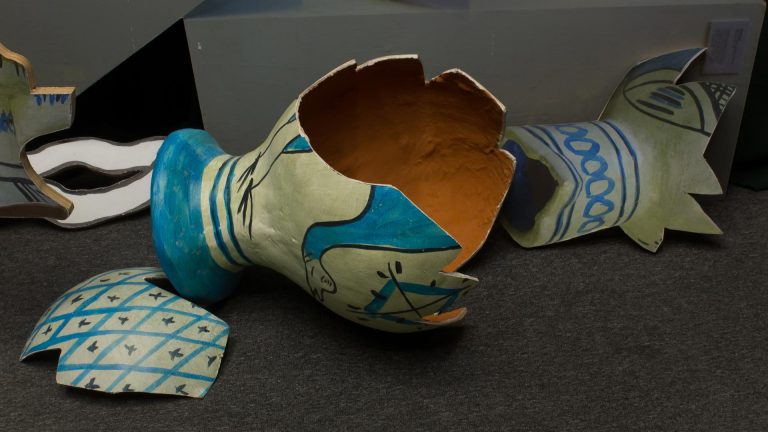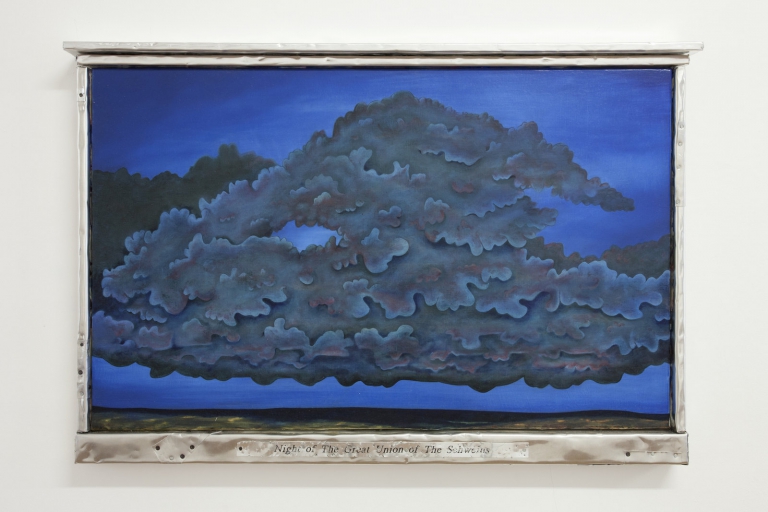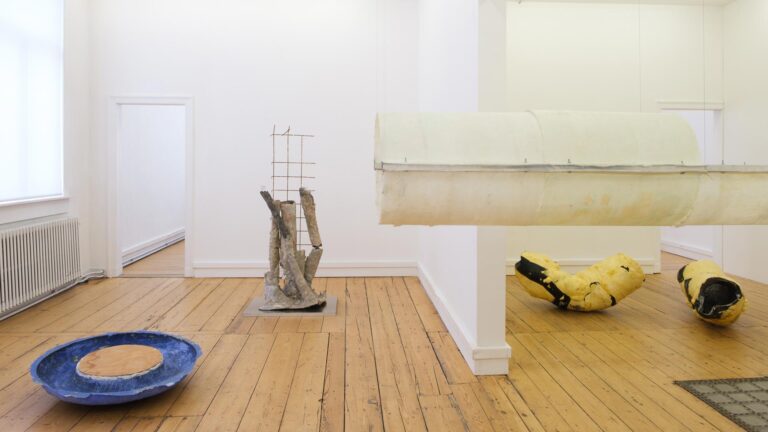
Artists: Joachim Beens, Arnaud De Wolf, Saskia Van der Gucht
Exhibition title: De gemene deler
Curated by: Benny Van den Meulengracht-Vrancx
Venue: Hole Of The Fox, Antwerp, Belgium
Date: January 29 – February 15, 2015
Photography: Courtesy of Hole Of The Fox
The Hot Fox presents
De gemene deler (The common denominator)
A group exhibition with Joachim Beens, Arnaud De Wolf and Saskia Van der Gucht
Hole Of The Fox invites artists Joachim Beens, Arnaud De Wolf and Saskia Van der Gucht, three artists with a very different practice, sharing a common denominator, the medium of photography. Arnaud De Wolf is a contemporary photographer whose work is purely photographic, while Saskia Van der Gucht uses the medium next to self-made objects and drawings in order to amplify her setup and story. Thirdly, Joachim Beens’ paintings search for the status in between object, photograph and painting.
It is well noted that the medium has had a controversial history. From the acceptance of photography as an art form, to the influence it has had on the areas of censorship, expression and public awareness. This exhibition can be seen as a celebration of its versatility and the impact photography has had on artists of all mediums. ‘De gemene deler’ means to show photography as leitmotif in divergent artist’s practices.
Joachim Beens
Our interpretation of reality can be viewed largely as image-based. Photography, video games, the visual arts, and so on, all have a history of framing and trying to define realism in their own way. In his practice, Joachim Beens emphasizes and/or identifies the systems they employ to this purpose, usually by eliminating information essential to their readability. He searches for the appropriate source material and focuses on the flat surface, scanning games, books, films, and the Internet. Often, this is prosaic or cliché material, therefore he grabs not content, but form, from a confirmed viewpoint.
Although an interest in other mediums is present, painting is his favoured one and he involves its history, traditions and materiality in his exploration. Ultimately, he lets intuition play a defining part in the process, to counter an altogether too rational and analytical approach.
Arnaud De Wolf
Following his fascinations is a fundamental principle. Personal journeys (abroad) guide him to remote, desolate and often solitary places. Here, a greater interdependence between culture and nature prevails. Once present, his new habitat is the centre of his research.
Working very intuitively, using photography and video, he creates a fictitious, parallel world, filtering out the ‘disturbing parameters’, ‘turbulence’ or ‘noise’ of contemporary, post-industrial society and rendering geographically ambiguous, alien places, which contain a fragile equilibrium between nature and culture. He calls them hibernating places. They generate a delusively peaceful universe that exudes Unheimlichkeit, solitariness, transitoriness and mortality on the one hand, as well as beauty, hope and a universal desire on the other hand.
When making pictures, he tends to envision the final representation. Multiple techniques are considered, such as classical prints, old and new photographic techniques, the use of the materiality of paper, projections, installations, etc. Furthermore, he often tries to involve the spectator by anticipating the expectations made and obliging him to take a position.
Saskia Van der Gucht
Her work revolves around the aspects of value and preciousness, and the different levels on which these aspects are conceived. Although a material itself aims to be objective, its value is mostly based on the agreements or a set of rules humans create for the purpose of classification. It’s a combination between the physicality of the material and craftsmanship, technique and the applied skill, which influences the set appraisal.
By contrast, emotional value is much more personal and subjective, often concerning memory and some form of meaning in relation to an object, but on both levels the aspect of time plays an important role, how many hours a person spent on making something or how long something has been in someone’s possession, both can effect the outcome of its value.
The importance of an object often reflects in the way we pack it. Packaging communicates, it can contribute to status and allure; certain packaging causes certain expectations. A consumable is placed in a plastic container and artworks are shipped in wooden crates. Some things are packed to protect or transport, giving it a temporary shell, others are packed permanently. A house can also be viewed as a form of packaging; with its outside and inside, the ability to open/close and to protect its inhabitants.
Saskia Van der Gucht translates these subjects into objects and tells an often intrinsic story by placing them meticulously in the space.



Arnaud De Wolf, Weir, 2014

Arnaud De Wolf, Crystal, 2015


Saskia Van der Gucht, Sign, 2015

Saskia Van der Gucht, Welcome, 2015


Joachim Beens, A rug, 2013

Arnaud De Wolf, Heim, 2012


Saskia Van der Gucht, to remain, 2014


Joachim Beens, ///, 2013

Saskia Van der Gucht, Present, 2014


Arnaud De Wolf, Bunker, 2013

Joachim Beens, WOOD_DIFFUSE, 2012






